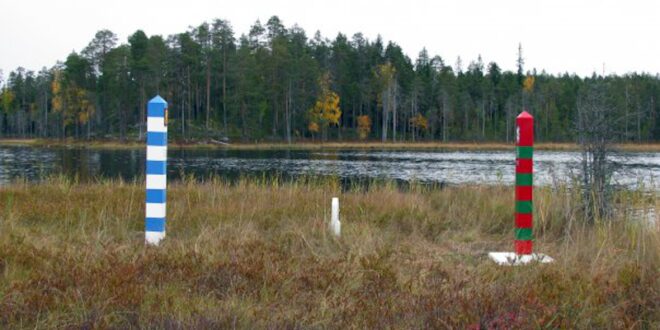Colored marker stones placed on either side of a small river – blue and white for Finland, red and green for Russia – are all that separate the two countries in the windswept fields of the South Karelia region. The border stretches 1,340 kilometers from the Baltic Sea to the Arctic, much of it sparsely populated, frozen wilderness.
For decades, the two countries have enjoyed peaceful relations, founded on Finland’s post-World War II policy of neutrality and nonalignment. But this simple border could soon become be a frontier between East and West: a geopolitical fault line.
Finland’s government said Thursday that the country should immediately apply to join NATO in response to Russia’s invasion of Ukraine, upending a cornerstone of Finnish foreign policy in the space of a few weeks. Finnish lawmakers are set to vote on the issue in the coming days before an expected official application for NATO membership next week, in what is likely to be a joint bid with Sweden.
Finland’s admission into the alliance is likely to be a formality. It would create by far the longest land border between NATO and Russia.
Moscow has threatened what it calls a “military technical response” if Finland joins the alliance. There are fears the border could become a flashpoint.
“Could Russia then try to take a playbook of, say, Georgia, and try to create some kind of frozen conflict, invade a small part of Finland with the very few forces it has left? Certainly, it could try, but Finland has prepared for this militarily,” Charly Salonius-Pasternak of the Finnish Institute of International Affairs told VOA.
For now, there is no visible military presence on the Finnish side, and little to indicate the emergence of any new Cold War Iron Curtain.
Impact unknown
Finnish border guard Captain Jussi Pekkala oversees operations at the Vaalimaa crossing point. “We don’t know what will happen and how the situation will change between our countries. But at this time the situation is calm, and border traffic is flowing smoothly,” he told VOA on a recent visit to the frontier.
When Russia launched its invasion of Ukraine, Pekkala said, there was a brief increase in crossings. “We had a lot of persons fleeing from Russia. Of course, Europeans, Americans. Actually, we had like 52 nationalities coming.”
Now cross-border traffic is running at just 10% of normal levels. Russia’s Sputnik coronavirus vaccine is not approved in the European Union, so most Russians have not been able to enter the bloc for the past two years.
Europe has not introduced travel restrictions on Russian visitors since the Ukraine invasion — but Finland’s bid to join NATO could choke off the remaining trickle of visitors as tensions increase.
The decline has hurt the regional economy. Frontier shopping malls selling luxury European brands to Russian consumers lie eerily empty.
Kimmo Jarva, the mayor of Lappeenranta, the biggest town in the region and a popular destination for visiting Russians, said the impact has been significant.
“We are used to cooperation with Russians. Here, for example, more than 3,000 Russian-speaking inhabitants are living here. Almost 2 million Russians were coming every year to this area. But now very few tourists are coming here. And we have estimated that we are losing 1 million euros ($1.04 million) every day because of this situation,” Jarva said.
Much of what happens at the border will depend on Russia and its reaction to Finland’s NATO membership bid. The chill of rapidly worsening relations between East and West is keenly felt on this frontier.
 Eurasia Press & News
Eurasia Press & News




